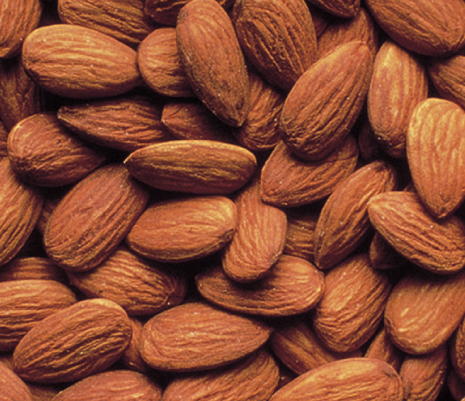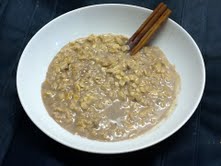Continuing on with yesterday's theme, I wanted to summarize options for anyone who, for whatever reason, chooses to drink milk alternatives instead of cow's milk.
The primary problems with these alternatives are:
1. They almost, without question, do not provide equivalent amounts of protein and raise your diet's carbohydrate to protein ratio.
2. They are often sweetened, increasing your simple carbohydrate to complex carbohydrate ratio.
3. Most of the alternatives, except for coconut milk, do contain vitamin D. However, check your label just to be sure.
If you choose to use these, in general, you are not substituting milk alternatives for milk. You are drinking a beverage that creates a need for you to increase your protein, vitamin D, and complex carbohydrates in the foods you also choose, in order to make up the deficiencies this switch inevitably creates. If you do not know how to do that, a consultation with one of our inCYSTers might be helpful. Many of them offer Skype consultations if you do not see on our list below and to the right who lives near you.
Here's the rundown. For comparison, per 8 ounces, 1% milk contains:
110 calories
8 grams protein
5 grams fat
12 grams carbohydrate
0% added sugar
One bias I do have which is reflected below, is toward soy milk. Too many women with PCOS have thyroid problems, for me to feel responsible presenting it as an option. So I have omitted it.
All information is for an 8 ounce serving.

ALMOND MILK
This one appears to be the most popular. One benefit to almond milk is that since almonds are naturally sweet, there is not as much of a need to add sugar in order to make them palatable. The disadvantage to almond milk is that, consumed in large enough quantities, it may increase your omega-6 intake enough that you promote, rather than reduce, inflammation (almonds, while beneficial in moderation, are the only nut that contain absolutely no omega-3's and for that reason should not be the only nut you exclusively eat).
Almond Breeze Brand
45 calories
2 grams protein
3.5 grams fat
3 grams carbohydrate
0% of carbohydrate is added sugar
Pacific Foods Vanilla Almond
45 calories
1 gram protein
2.5 grams fat
3 grams carbohydrate
0% of carbohydrate is added sugar

FLAX MILK
I do like flax milk's omega-3 fatty acid content. It's sweetened, but not to the same degree as many of the other milks. I could see using this in cooking, in any recipe that called for cream, or as coffee creamer, as a way to enhance your diet's overall omega-6 to omega-3 ratio. It still comes up short in the protein department.
Flax USA Flax Milk
50 calories
0 grams protein
2.5 grams fat
7 grams carbohydrate
100% of carbohydrate is added sugar

HEMP MILK
One benefit to hemp milk is its omega-3 content. However, it is sweetened pretty significantly so consumers will drink it.
Living Harvest Hemp Milk
130 calories
4 grams protein
3 grams fat
240 grams carbohydrate
75% of carbohydrate is added sugar
Manitoba Harvest Hemp Bliss
110 calories
5 grams protein
7 grams fat
7 grams carbohydrate
86% of carbohydrate is added sugar

OATMEAL MILK
Highest in calories, partially because it's sweetened. Eating the real oatmeal will give you better benefits.
Pacific Foods Oatmeal
130 calories
4 grams protein
2.5 grams fat
24 grams carbohydrate
79% of carbohydrate is added sugar

HAZELNUT MILK
The fat in hazelnuts is primarily monounsaturated, making the fat here healthy, but again, low protein and high added sugar are problematic
Pacific Foods Hazelnut Milk
110 calories
2 grams protein
3.5 grams fat
18 grams carbohydrate
78% of carbohydrate is added sugar

COCONUT MILK
I love this milk, but consumed in place of milk, the saturated calories will add up. Yes, the fat in coconut milk is different than the fat in meat, but even so, your overall intake of saturated fat, regardless of the source, should be no more than 10% of total calories. So I say save this one for cooking (as in Thai curries) or used sparingly on breakfast oatmeal or quinoa. It's not really the best choice for drinking by the glass.
Regular Canned Coconut Milk
445 calories
5 grams protein
48 grams fat
6 grams carbohydrate
0% of carbohydrate is added sugar
Trader Joe's Light Coconut Milk
150 calories
0 grams protein
12 grams fat
12 grams carbohydrate
0% of carbohydrate is added sugar
So Delicious Coconut Milk (carton)
50 calories
1 gram protein
5 grams fat
6 grams carbohydrate
86% of carbohydrate is added sugar
Silk Coconut Milk (carton)
90 calories
1 gram protein
5 grams fat
10 grams carbohydrate
90% of carbohydrate is added sugar

RICE MILK
Until recently, rice milk was also an option that fell short in protein and in which sugar was added to sweeten and flavor. The first example here illustrates that point. The second option, which has recently come on the market, is a great advancement as far as milk alternative options go.
Both brands are made with brown rice, and both contain vitamins D and B12. However, safflower oil, one of the pro-inflammatory omega-6 fatty acids we encourage you to limit, is also listed as a Rice Dream ingredient. Just wanted to cover that base.
For women with PCOS, the addition of stevia by Growing Naturals is an added plus, as research is suggesting that regular consumption of stevia may help to improve pancreatic function, reduce cravings for sweets, and improve memory. All of those are chronic issues which make it hard to make the choices promoting hormone balance. In addition, Growing Naturals DOES contain vitamin D (in the vegan D2 form), and vitamin B12, often deficient in vegans.
Rice Dream Rice Milk
120 calories
1 gram protein
2.5 grams fat
23 grams carbohydrate
43% of carbohydrate is added sugar
Growing Naturals Brown Rice Milk
110 calories
8 grams protein
1 grams fat
17 grams carbohydrate
0% of carbohydrate is added sugar
So by now you know my bias, but now you also know why it exists. I use all of these milks in my kitchen. But I do so in different ways. Some as condiments and even coffee creamers, as I do enjoy their flavors, but not as a beverage choice I drink by the glass. The two I drink by the glass are cow's milk and Growing Naturals. Hopefully I've provided you with enough information to de what combinations are most hormone-friendly for you.
If you're interested in trying/using Growing Naturals yourself, and it hasn't arrived at your local store, here is information for ordering.

































